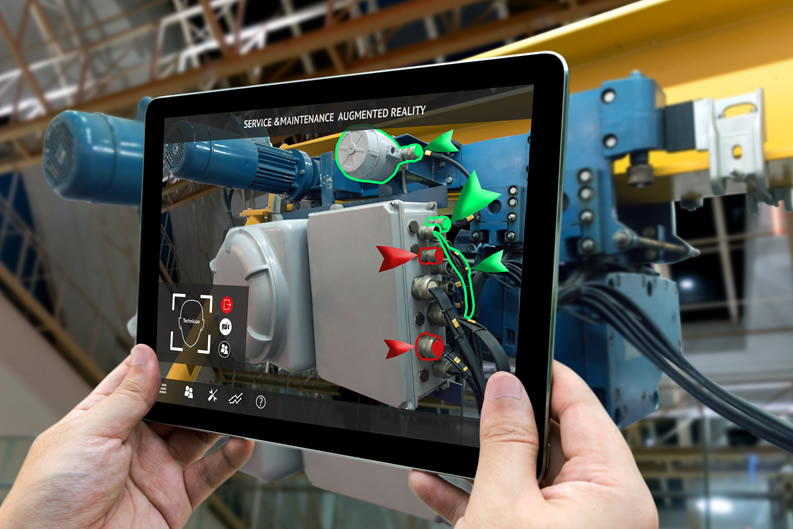Business Process Insights
2023 Trends in Field Service Management
The area of field service management (FSM) is highly dynamic. New technologies are changing the way service is delivered and, when implemented correctly, they often can increase productivity and customer satisfaction. In this blog, we will highlight some of today’s most important field service trends.
1. Mobile Workforce Enablement
Field service technicians increasingly rely on mobile devices and apps to access real-time information, schedules, customer data, and job details. This trend is expected to continue to grow to enhance productivity and efficiency. Already, no field service management solution is complete without a mobile application. As mobile devices like iPhones, Android smartphones, and tablets get more powerful and offer more storage, they make new ways of working possible among remote workforces.

2. IoT and Connected Devices
The Internet of Things (IoT) is becoming a game-changer in FSM. Connected devices and sensors enable proactive maintenance by providing data on equipment health and predicting potential issues, thereby reducing downtime and curbing costs. These IoT solutions are easy to integrate with new machines and assets, but integration can be costly when it involves legacy equipment.
3. Artificial Intelligence (AI) and Machine Learning
AI and machine-learning algorithms are being employed to optimize scheduling and routing, predict maintenance needs, and analyze historical data to improve decision-making. With generative AI, communication with the customer can become faster and easier.
4. Predictive Maintenance
Companies are moving from reactive maintenance models to predictive maintenance. Predictive analytics, combined with IoT data, help anticipate when equipment is likely to fail, allowing for timely repairs and reducing downtime. Because predictive Maintenance relies heavily on historical data, companies need to ensure they have all relevant data available in their FSM solution to leverage this trend.
5. Augmented Reality (AR)
AR is being utilized for remote assistance. Technicians can wear AR glasses or use mobile devices to connect with experts who can guide them through complex tasks, reducing the need for on-site expertise. Ongoing investment by major technology companies such as Apple, Google, and Facebook means that further improvements in this field are very likely.

6. Customer-Centric Approaches
There is a shift toward a more customer-centric approach in FSM. Companies are focused on improving customer experiences by providing accurate arrival times, transparent communication, and personalized service. Organizations that integrate their field service management with their CRM (e.g., Salesforce) have the advantage of integrated processes, which lead to a better, more streamlined customer experience. Customer communities that allow customers to open and track their cases, download information, and access manuals about their assets are helping organizations develop stronger and more loyal customer relationships.
7. Cloud-Based FSM Software
Cloud-based FSM solutions are becoming increasingly popular due to their scalability, accessibility, and ease of use. Salesforce—a cloud company from the start—and SAP’s cloud-based FSM solution are just two examples.
It is important to ensure that an integration into on-premise ERP systems is available since it offers the only way to track the availability of spare parts, trigger the billing process, and tap into other ERP-based functionality.
8. Data Analytics and Reporting
Advanced data analytics tools are being used to gain insights from FSM data. These insights help in optimizing operations, allocating resources, and making informed decisions. Here, we also see the importance of integrating with other systems since relevant data will rarely be available in the FSM solution alone.

9. Sustainability and Green Initiatives
More organizations are integrating sustainability practices into their FSM operations, such as optimizing routes to reduce fuel consumption and emissions.
10. Compliance and Regulation
Keeping up with changing regulations and compliance requirements, especially in industries like healthcare and public utilities, is a significant concern. FSM software is being updated to facilitate compliance.
11. Remote Work and Collaboration
The COVID-19 pandemic accelerated the adoption of remote work and collaboration tools in FSM. This trend is expected to persist as companies see the benefits of remote collaboration for training and support.
12. 5G Technology
The rollout of 5G is expected to have a significant impact on FSM by offering faster and more reliable connectivity, which is crucial for real-time data access and communication. For critical business processes, some companies are still required to offer offline support in mobile applications.
13. Drones and Robotics
The use of drones and robots is becoming more common for inspections, deliveries, and other tasks, reducing the need for human intervention in hazardous or hard-to-reach locations.

Conclusion
The FSM market is changing fast. This makes it even more important to work with one of the major players like Salesforce to ensure that current and future trends are made available promptly.
AUTHOR

Alexander Ilg








